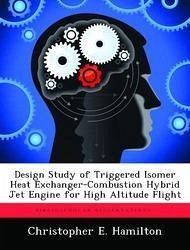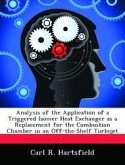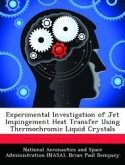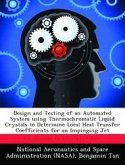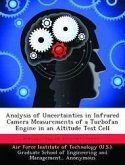This study investigated the possibility of utilizing a Triggered Isomer Heat Exchanger (TIHE) within a conventional jet engine in order to increase the endurance of a High Altitude Long Endurance (HALE) Intelligence, Surveillance, and Reconnaissance (ISR) aircraft. Optimizations of the conventional and TIHE engines along with selection of a switchover flight condition, where the aircraft switches from combustion to TIHE operations, were made utilizing engine design and mission analysis software. Radiation shield weights were determined utilizing point source gamma ray shielding methods. The jet engine best suited for the hybrid use, where both combustion and TIHE components located in a single engine, was a mixed stream turbofan engine flying both the conventional and TIHE legs of the mission, with a switchover Mach of 0.4 and switchover altitude of 40,000 ft. With the single hybrid engine, including shield weights and modifications, endurance could easily be extended into weeks instead of days, while also resulting in a 20% drop in takeoff weight of current vehicles. The reduction in weight was due mainly to lower fuel requirements.
Hinweis: Dieser Artikel kann nur an eine deutsche Lieferadresse ausgeliefert werden.
Hinweis: Dieser Artikel kann nur an eine deutsche Lieferadresse ausgeliefert werden.

